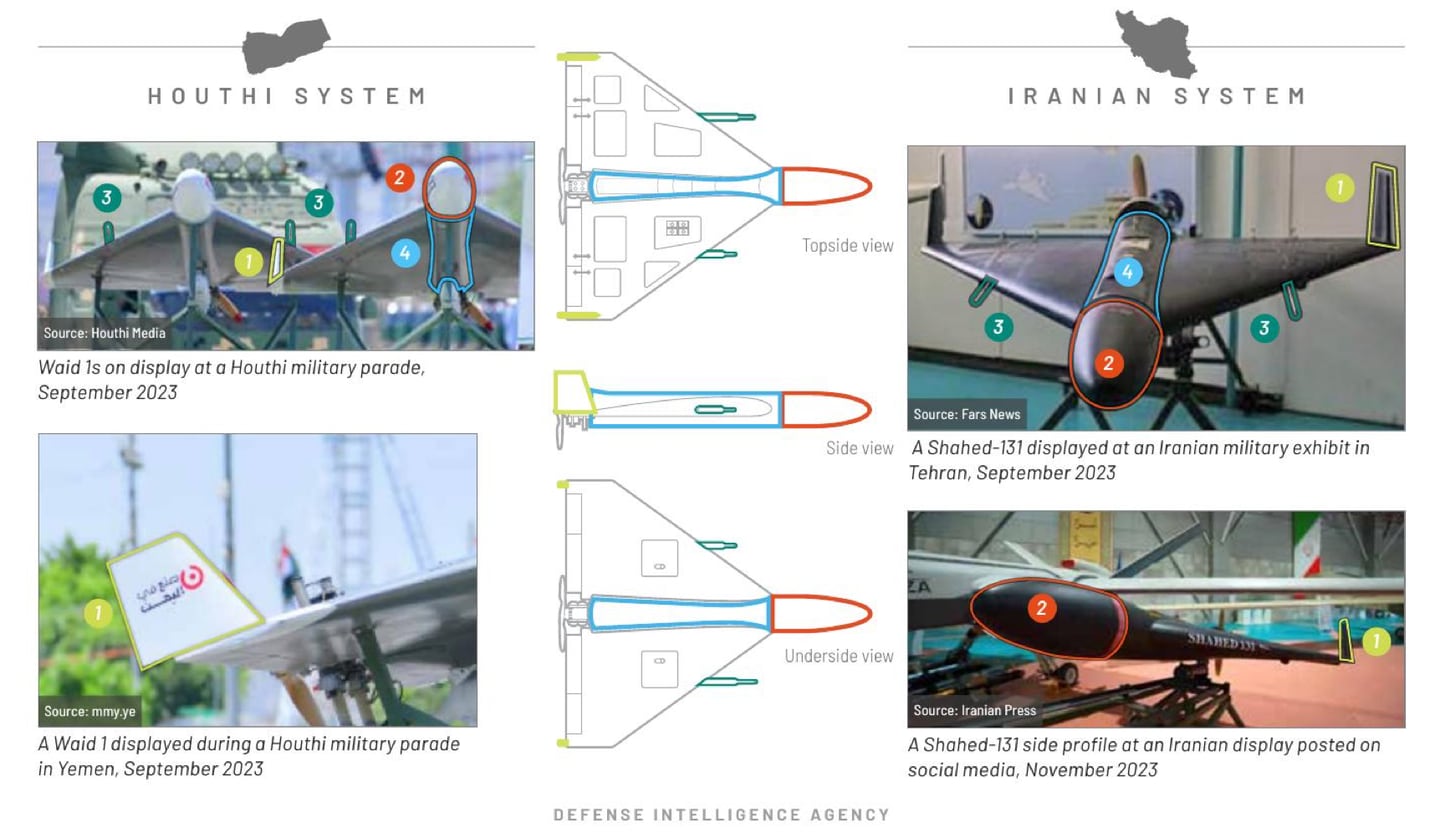Houthi rebels based in Yemen are equipped with the same Iranian-sourced attack drones as Russian troops invading Ukraine, according to reports from a U.S. intelligence agency.
Both forces have used unmanned aerial vehicles to attack from afar and modernize their arsenals. Since October, the U.S. Navy has shot down dozens of one-way drones bound for the Red Sea and Gulf of Aden, while the Ukrainian military many miles away contends with what has been described as a drone war in Eastern Europe.
The Defense Intelligence Agency this week published a report documenting how Iran arms Houthi militants, highlighting among other weaponry the Waid 1 and 2 drones. The DIA said they share distinctive features — pitot tubes, fuselages, stubby nose cones — with Iran’s Shahed-131 and -136, which have a range of more than 1,000 miles.
Another DIA study published in August said Russia’s Geran-1 and -2, although rebranded, were of Iranian origin for similar reasons. The findings were based on retrieved parts as well as visual comparison of publicly available images. Parades and other military showcases provide analysts a chance to scour foreign firepower.
“The Waid 2 wing stabilizers displayed by the Houthis in Yemen are consistent with the size and shape of the winglets on the Shahed-136 displayed in Iran and debris from the Geran-2 — the Russian name for the Shahed-136 — recovered after Russian attacks in Ukraine,” the DIA assessment stated.

Asked about the proliferation of Iranian drones among two different forces in two different regions, a DIA spokesperson said all the information the agency has “on this topic is in the report and the accompanying release.” The agency, based at Joint Base Anacostia-Bolling just south of the Capitol, is a principal source of foreign intelligence for military endeavors.
Stateside leadership has expressed increasing concern about Iran’s influence abroad. U.S. and allied forces have interdicted more than 18 Iranian smuggling vessels since 2015, seizing ballistic missile components, UAVs, anti-tank guided missiles, firearms, rockets and more.
Pentagon spokesperson Sabrina Singh on Feb. 6 told reporters that the department has “been very clear that Iran does supply the Houthis, and other [Iranian Revolutionary Guard]-backed militias, with weapons and different capabilities, including UAVs.”
She declined to comment on the specifics of DIA’s assessment.
A one-way drone attack last month that killed three U.S. soldiers at the Tower 22 installation, near al-Tanf garrison and the Syrian border, was blamed on Tehran-backed militants. Washington responded by hitting more than 85 targets linked to the Revolutionary Guard, including command-and-control headquarters, intelligence centers, and drone and ammunition storage sites.
The strikes featured long-range B-1 bombers.
Colin Demarest is a reporter at C4ISRNET, where he covers military networks, cyber and IT. Colin previously covered the Department of Energy and its National Nuclear Security Administration — namely Cold War cleanup and nuclear weapons development — for a daily newspaper in South Carolina. Colin is also an award-winning photographer.








